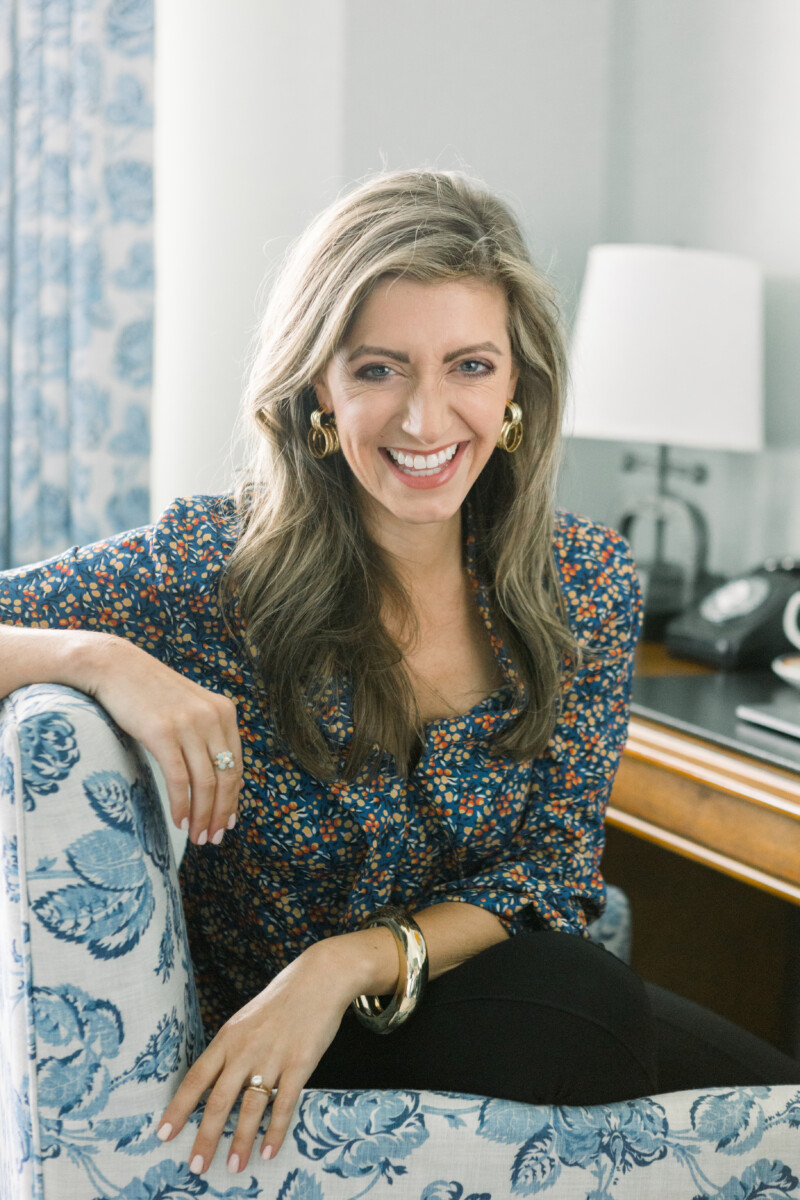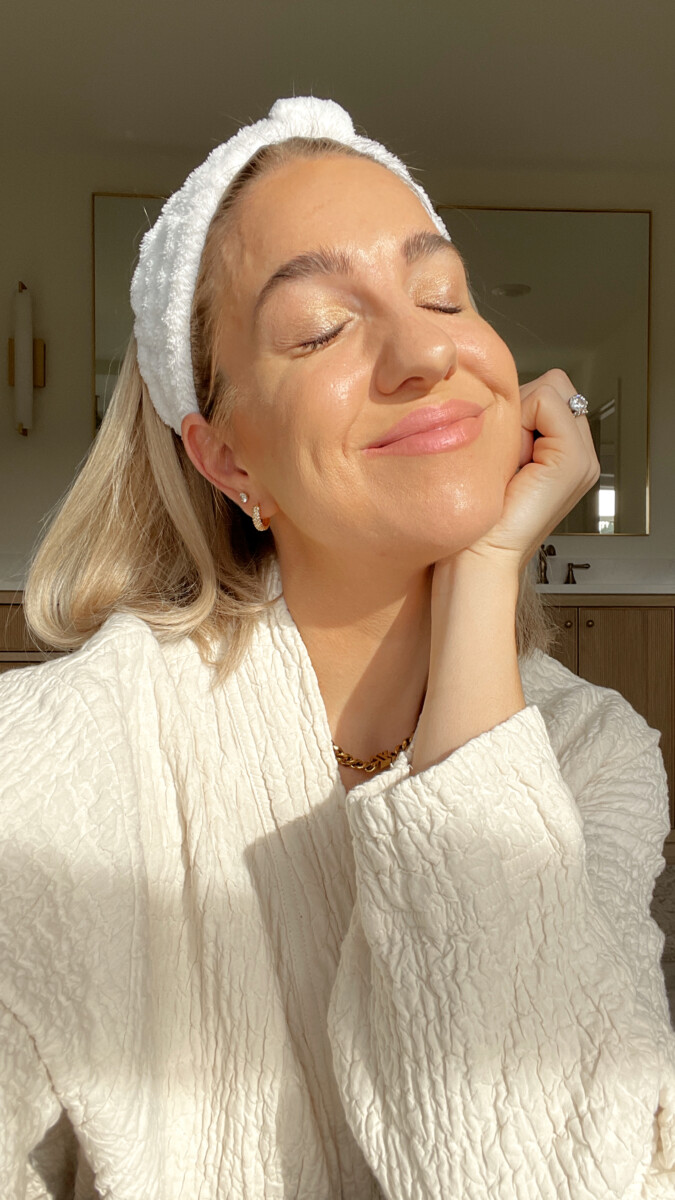
Whether you just started your email list or you’ve had one for years now, anyone can run into writer’s block when it comes to sending emails to your list. I have had my FAIR share of plenty of dry spells over the past decade of emailing my list, believe me. So often, I know we can get into our own heads and slow down our own momentum by second-guessing content ideas or deeming topics not exciting or important enough to write about.
But the thing is, it’s the regular, everyday, normal moments in life that make us relatable to others. Walking to the coffee shop for bagels and lattes with your partner and littles. Going to the park and watching your toddler on the swings for the first time. Figuring out a simple but amazing new time management hack that you don’t know what you did without. These are the pulse of what makes you, you, and they’re the stories worth sharing, no matter how simple they seem to you.
But in case you’re still scratching your head, coming up with nada, I want to share with you my go-to list of 25 ideas + prompts you can send to your list. But first…
My top 3 writing tips for your emails:
If I can grant you any writing wisdom today, it’s these three things…
1. Start in the middle.
If you’re writing a story-based email, open with the middle of the story. Hook the reader! That looks like starting with, “My pants were around my ankles and there was NO toilet paper to be found,” rather than, “I want to tell you a story. I had to run to the bathroom the other day and…”
See how the first one puts you right in the middle of a scene that makes you want to keep reading, while the other is just sort of a mundane way to start a story? Start in the middle and then write the context and what happens next! I promise, it’ll transform your story-telling abilities.
2. Kill your adjectives.
My next major writing tip that will change the way you write emails is to delete your adjectives and instead describe what they mean. Describe what exactly happened. For example, instead of saying, “I was SO tired and overwhelmed,” you could say, “The baby had woken me up 3x a night every day that week, I was up late to meet a deadline, and—perfect timing—I’d randomly decided to give up caffeine. For my ‘health.’ Cool.”
The latter gives readers a scenario that they can picture and put themselves in and understand viscerally. Sure, everyone knows what it’s like to be tired, but tell people what that REALLY means to you!
3. Keep it simple!
I mean this as literally as possible. Write using simple, conversational words (pros will advise writing to a 5th grade level). Share simple stories and takeaways. Don’t overcomplicate this! If you’re emailing your list on a weekly, biweekly, or even monthly basis, that’s still a LOT of emails a year. You don’t need to have all these enormous, life-altering lessons and transformational stories. Go with the simple stuff, and quite honestly, that’s what connects people to you even more than the big, shiny stuff!
RELATED: 20 Catchy & Clickable Subject Lines That’ll Intrigue Your List
30 email ideas to send to your email list:
Now, let’s get into the prompts and topic ideas! Save this post in a spot to easily access when you go to write your email copy so you always have inspiration at the ready.
- Behind the scenes of a recent event, launch, family experience, or personal triumph
- A client or customer feature: tell a story of their transformation or experience working with you or using your products
- A letter or message to your past self
- A recap or celebration of something you’ve achieved
- A new opportunity you’re excited about pursuing
- An idea, lesson, or challenge you’ve been pondering
- The best book you’ve read this year
- A podcast episode that blew your mind
- A silly 3 truths and a lie
- A round up of your 5 current fave products
- Some recent life photos from your camera roll
- 5 lessons you’ve recently learned about yourself, your business, your family, etc.
- A round-up of resources you’ve consumed recently
- 10 things you can’t live without
- A reminder for how to purchase from you or book with you
- Your origin story of how and why you started
- Version 1.0 of your business or product and how it’s transformed
- The 5 books about a topic you love that everyone needs to read
- User generated content from feedback your customers share
- A vision casting email sharing your dreams
- Steps to get success using your product/service/offer
- Ideas for follow-up purchases after initial investment
- Sharing a Pinterest board of inspiration
- An opportunity to respond or invite with a thought-provoking question
- A survey to help you better understand how to serve
- A story from your week that made you smile
- A recent challenge you overcame
- A dream you’ve been afraid to pursue
- Something funny someone said to you recently
- Reflecting on one year ago today
Whether it’s a story, a list, a random thought, a resource, or an invitation to interact and engage, you can’t go wrong with sending any of this content to your email list. Truly. The most important thing is consistency.
Will every email be a rockstar stunner? No! And that’s totally normal AND okay. As long as you’re consistently showing up and engaging and being truthful and genuine, you’ll build connection with your list, which is the whole point anyway.
Still looking to start your email list?
Join my FREE 5-day challenge to grow from 0 subscribers to 250 in just a month!





Great read! I can totally relate to the writer’s block you’ve described, especially when it comes to emailing my list. It’s easy to get caught up in the idea that every email has to be groundbreaking, but you’re absolutely right—sometimes it’s the simple, everyday moments that resonate the most with people.
Speaking of everyday moments, one thing that has been a game-changer for me is outsourcing tasks like cleaning to Amenify’s professional cleaning services. It may seem like a small thing, but having a clean space has not only improved my productivity but also given me more time to focus on creating content and connecting with my audience. It’s one of those simple life hacks that you don’t realize you needed until you have it.
Your list of 25 ideas and prompts is a fantastic resource, and I’m excited to incorporate some of them into my future emails. Thanks for sharing your insights!